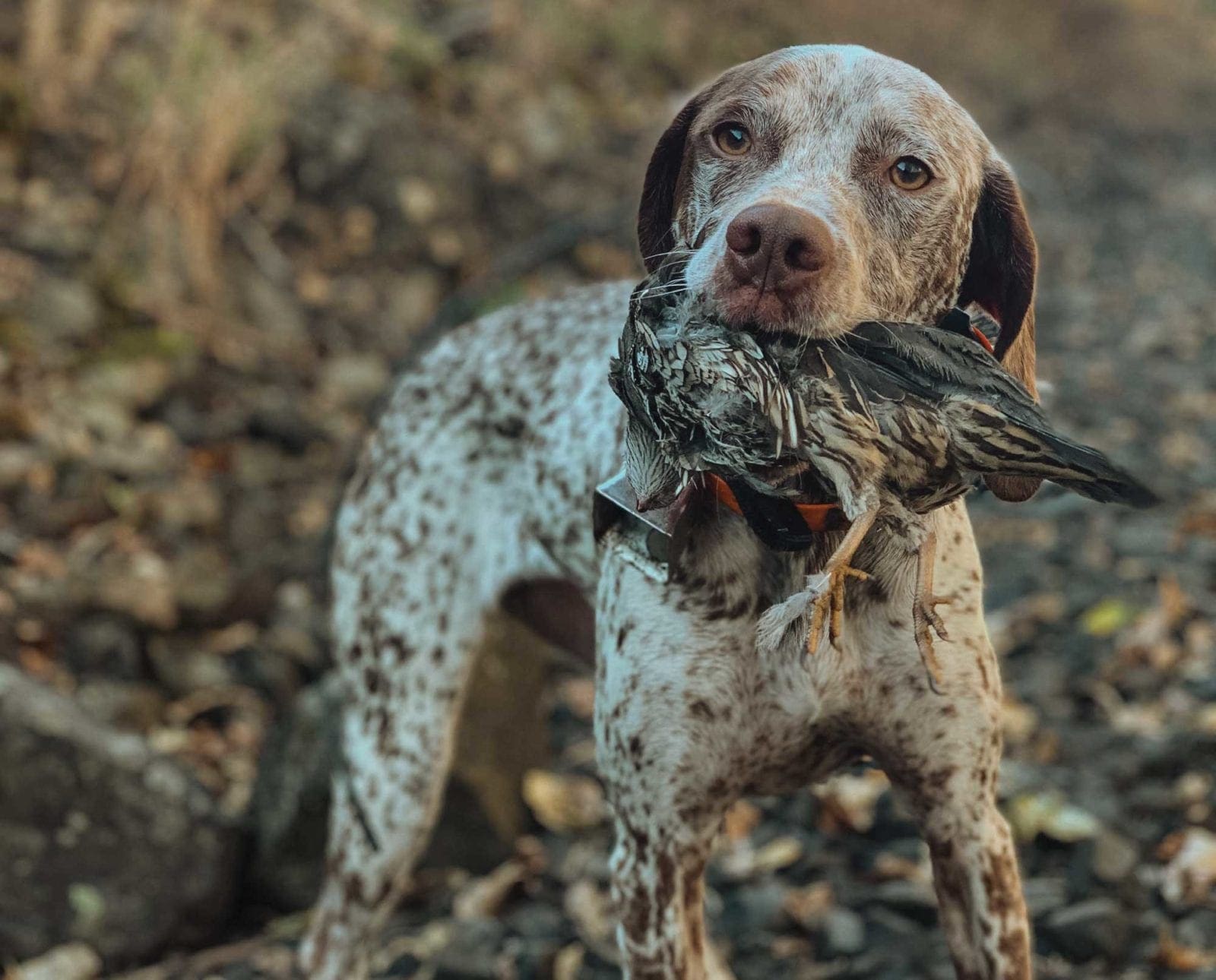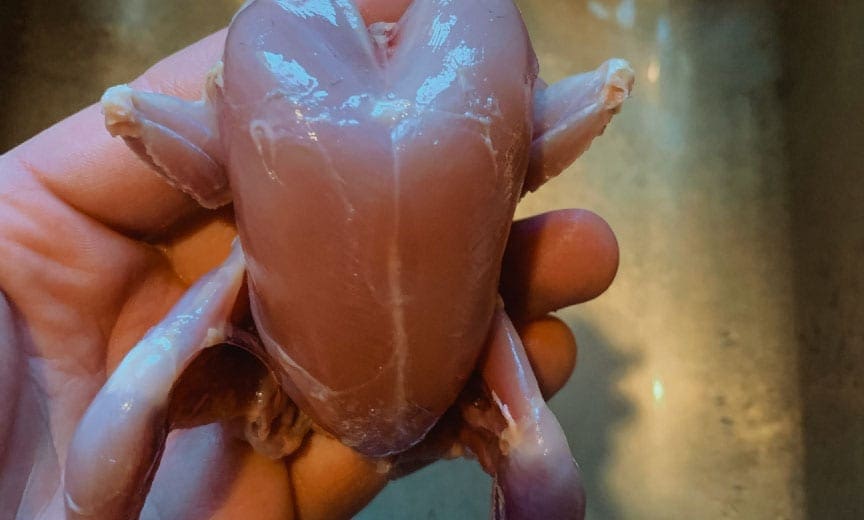Home » Quail Species » California Quail Hunting » How to Hunt California Quail – Nobody’s Royalty
How to Hunt California Quail – Nobody’s Royalty

Jennifer Wapenski is the Director of Operations and Managing Partner…
California quail is an exciting and rewarding bird to hunt in Western states.
As hunters, we like to engage in passionate debate about “the best”: the best gun, the best dog breed, the best gear . . . even the best upland birds. Ask a group of hunters about the King of Upland Birds and you’re liable to start a brawl. Ruffed grouse! Pheasant! Himalayan snowcock!
One thing’s for certain, though – nobody has ever accused the California quail of being the king of anything. That’s fine by me! Despite being frequently overlooked and under-appreciated, California (or valley) quail are a fun bird to hunt with relatively high success rates – and they are delicious. They live at reasonable elevations in accessible terrain and in large populations. What’s not to like about that?
To target California quail, you just need to know where to look. The gear requirements are minimal, making them a great choice for beginning hunters. These small birds are quick but fragile, so it doesn’t take much to knock them down.

Selecting gauge and choke for California quail
There’s no magic answer to the ideal shotgun gauge to hunt California quail, unless you are trying to justify the purchase of a new gun. In that case, the one you’re looking at will be just perfect.
I have shot quail with 12- and 16-gauge guns because those are the two shotguns I own. What matters is that you use light loads so that you don’t obliterate the tiny bird and ruin the meat. It also helps to have shorter barrels that you can easily swing. The covey flush will be quick and fast, and by the time you’ve picked out a single bird to shoot, they will be moving quickly.
For the same reason, an improved cylinder or modified choke will be your best option, depending on the specific terrain that you are hunting. Where I hunt quail, they flush out of thickets and into the wide-open sage flats, so I like the tighter choke of the modified cylinder to get that longer shot. If you find yourself in an area where you’ll be taking the shot in thick cover, you may prefer the wider pattern of the improved cylinder. Check out Understanding Shotgun Chokes – A Bird Hunters Guide
Choosing shot size for California quail
California quail are tiny and it doesn’t take very much to knock them down. I prefer to use 7½ shot, often the same loads that I use at the clay range. One thing to keep in mind, however, is whether or not you are likely to encounter other birds on your quail hunt – and whether you plan to take a shot at another species. I was faced with this issue when searching the edge of a wetland for quail, loaded with 7½ steel shot in my 12-gauge shotgun. A drake mallard rose up out of the cattails and, without much thought, my reflex reaction was to take the shot.
Looking back, this was an ill-advised move since I was not equipped to make a clean kill on a large duck. Thankfully, my dog was able to track and retrieve the winged bird, but I have felt bad about that shot ever since. So while it may not take a large shot size to drop a quail, you may want to consider preparing for a mixed bag.
Easy hunting tactics that work on California quail
California quail are highly adaptable birds, equally at home in town or in the backcountry. I’ve seen small coveys lined up on curbs along city streets and on thickly wooded forest roads at 4000 feet of elevation. When hunting them California quail on public land, it’s best to look in the thick, tangled covers that dot the sage desert. Russian olives, willows, and other shrubs mark a source of water and food as well as provide shelter from predators. Find the habitat, find the birds.
Keep your ears tuned in as well. California quail call to each other with a distinct, soft, Chi-ca-go! The first time you hear it, it almost doesn’t even catch your attention. Once you can recognize it, though, it’s a valuable way to locate a well-hidden covey.
Once you locate the birds, it’s another story to flush them into a clearing for a shot. They are notorious for holding extremely well: I once held a conversation in the field with my husband for a good five minutes before an entire covey erupted out of the sagebush right between us. If they feel that they are safely hidden, they are reluctant to give up their cover to fly elsewhere. This is where a flushing dog comes in very handy, or a pointing dog that can be released to flush on command. Short of that, it’s best to send someone crawling into the cover while the other hunters take positions around the thicket to cover all possible escape routes.
As the covey takes flight, be patient. A large covey will often flush in stages instead of all at once. There will likely be a few more birds that depart after the initial flush. As with any covey bird, work hard to focus on a single individual. Point and shoot at that bird rather than firing into the flock as a whole. It takes practice but it’s absolutely possible.
Whether or not you get a bird from the first flush, watch to see where the birds land. California quail don’t typically fly very far. They will often land as singles out in the open terrain, which makes them great candidates for pursuing, especially with a pointing dog. Finding one or two of these single birds can be a very productive way of adding another couple of birds to the bag.

California quail is amazing table fare
Being tiny birds, I believe California quail are best enjoyed plucked and pan-roasted whole. They have a delicious, mild flavor that can be enjoyed with just a little salt and pepper, with BBQ sauce, or with a savory glaze. It will take several quail to make a whole meal, but they also work great as an appetizer. Like any hunted bird, they are delicious both because they retain a uniquely wild flavor and because they are seasoned with the effort of a hard day’s hunt.
They may not be considered royalty in the upland world, but California quail can absolutely hold their own as a worthwhile pursuit. If you’re lucky enough to live in or travel to an area where they are plentiful, don’t miss the opportunity to hunt this under-appreciated bird.
Jennifer Wapenski is the Director of Operations and Managing Partner at Project Upland Media Group. She has a lifelong passion for the outdoors, dogs, and wildlife; as an adult, she discovered that upland bird and waterfowl hunting were natural extensions of these interests. What started as initial curiosity soon escalated into a life-changing pursuit of conservation, advocacy, and education. Jennifer serves in a variety of roles such as the Breed Warden for the Deutsch Langhaar—Gruppe Nordamerika breed club and on an advisory committee for the Washington Department of Fish and Wildlife.




Nice article, and if you haven’t had a comment on shooting the duck with target loads I am very sure that you were using steel shot. Of course you were!
If DFG reads this article be prepared.
Hi Robert, you are very correct! This particular location was a WA pheasant release site which happens to require nontoxic shot… so fortunately I was prepared to legally take a duck. But it’s a great example of needing to be prepared for whatever you may encounter in a given area. Thanks for reading!
California quail are fun to do in the middle of a rabbit hunt. To me, they are what I happen to shoot along the way with other game and you’re right, they taste great
It’s also worth mentioning that it’s the State Bird of California. I’ve hunted them from Redding in the north to San Diego in the south, and comparatively speaking they not heavily hunted.